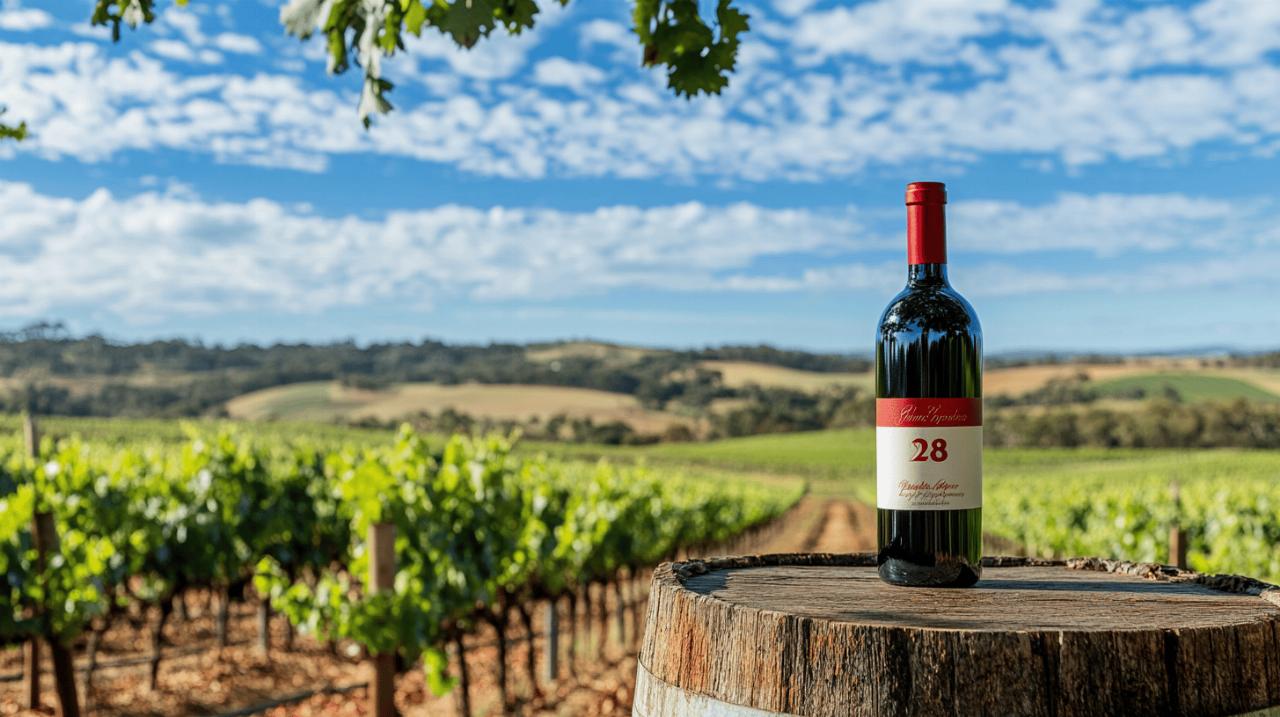Penfolds Bin 28 Australian Red Wine and Food: A Hotelier’s Guide to Creating Brilliant Combinations
For hoteliers seeking to elevate their dining offerings and delight discerning guests, few wines combine accessibility with sophistication quite like a robust Australian Shiraz. Among the exceptional options available, one particular expression from South Australia stands as a benchmark for quality and consistency, offering a remarkable gateway to understanding how warm-climate red wines can transform a meal into a memorable experience. The journey of pairing wine with food is both an art and a science, and mastering it can significantly enhance your establishment's reputation for culinary excellence.
Understanding penfolds bin 28: character and tasting profile
The Essence of South Australian Shiraz in Your Glass
The wine in question originates from one of Australia's most celebrated winemaking regions, often drawing its fruit from the legendary Barossa Valley where the warm continental climate produces grapes of exceptional concentration and ripeness. This particular expression represents the pinnacle of what Australian winemaking has achieved since the craft took root in the mid-nineteenth century, specifically from a heritage dating back to 1844 when serious viticulture first began in the region. The Shiraz grape thrives in these conditions, developing layers of complexity that translate beautifully into the glass. When you pour this wine for guests, they will immediately notice its deep, almost opaque ruby colour, hinting at the intensity that awaits their palate. The bouquet reveals itself gradually, offering aromas of blackcurrant and plum intertwined with darker notes of chocolate and liquorice, creating an inviting first impression that sets expectations for the richness to follow.
American oak influence and flavour development
What truly distinguishes this expression within your wine list is the careful maturation process it undergoes in American oak hogsheads, a technique that imparts distinctive vanilla and sweet spice characteristics to the wine. This oak treatment creates a beautiful integration of fruit and structure, adding dimensions of cinnamon, nutmeg, and toasted coconut that complement rather than overwhelm the natural grape flavours. The result is a wine with sufficient body and tannin structure to stand up to robust dishes whilst maintaining an elegance that prevents it from feeling heavy or overpowering. For hotel dining rooms where guests may be enjoying everything from casual bistro fare to more elaborate tasting menus, this versatility proves invaluable. The alcohol content typically sits around fourteen and a half percent, providing warmth without aggressive heat, and the finish extends pleasantly across the palate, leaving lingering impressions of dark berries and subtle oak spice that encourage another sip and another bite of perfectly paired food.
Classic Food Pairings for Penfolds Bin 28 in Hotel Dining
Red meat dishes: from steaks to sunday roasts
The fundamental principle of successful wine pairing involves matching intensity with intensity, and few combinations demonstrate this better than serving a full-bodied Shiraz alongside richly flavoured red meat preparations. A perfectly grilled ribeye steak with its marbled fat and caramelised crust creates an ideal canvas for this wine's structured tannins and fruit concentration. The proteins and fats in the meat soften the tannins whilst the wine's acidity cuts through the richness, creating a harmonious balance that enhances both elements. Consider offering this pairing with a simple accompaniment of roasted mushrooms and a red wine reduction, allowing the quality of both the meat and the wine to shine without unnecessary distraction. For weekend dining services, a traditional Sunday roast of beef with Yorkshire puddings and rich gravy provides another brilliant match, the wine's depth complementing the savoury, umami-rich flavours whilst its fruit notes offer a pleasant contrast to the meal's earthy components.
Rich game and lamb preparations that shine
Game meats present wonderful opportunities for showcasing the wine's ability to handle complex, assertive flavours. Dishes featuring venison, whether prepared as a rack with juniper and blackberry sauce or slow-braised as a rich shoulder ragu, find a natural partner in the wine's dark fruit character and spice notes. The slightly wild, gamey qualities of venison are tamed and enhanced by the Shiraz's smooth tannins and oak-derived sweetness. Lamb, particularly when prepared with Mediterranean or Middle Eastern influences, creates equally compelling pairings. A herb-crusted rack of lamb with rosemary and garlic allows the wine's fruit to complement the meat's natural sweetness whilst the herbaceous elements echo similar notes in the wine. Alternatively, a slow-cooked lamb shoulder braised with tomatoes, red wine, and aromatic spices becomes sublime when accompanied by a glass of this Australian Shiraz, the wine's structure supporting the dish's richness whilst its fruit brightness lifts the entire experience.
Crafting modern menu combinations with australian shiraz
Contemporary cuisine matches for adventurous guests
 Modern dining trends increasingly embrace global flavours and innovative techniques, and fortunately this wine proves remarkably adaptable to contemporary culinary approaches. When balancing heat in dishes, lighter red wines typically receive recommendations, but the fruit sweetness and generous body of this Shiraz can actually work beautifully with moderately spiced preparations. Consider pairing it with a char-grilled octopus dish finished with romesco sauce and smoked paprika, where the wine's richness complements the smokiness whilst its acidity balances the dish's textural complexity. Asian-fusion preparations also offer intriguing possibilities, particularly dishes featuring sticky glazes with soy, ginger, and star anise. A glazed pork belly with five-spice and plum sauce creates a fascinating interplay with the wine's dark fruit and sweet oak notes, demonstrating how traditional pairing boundaries can be thoughtfully expanded. For guests seeking plant-based options, substantial vegetable dishes such as roasted portobello mushrooms with truffle and aged balsamic or a hearty three-tomato risotto with parmesan provide sufficient body and umami depth to stand alongside this full-flavoured wine.
Modern dining trends increasingly embrace global flavours and innovative techniques, and fortunately this wine proves remarkably adaptable to contemporary culinary approaches. When balancing heat in dishes, lighter red wines typically receive recommendations, but the fruit sweetness and generous body of this Shiraz can actually work beautifully with moderately spiced preparations. Consider pairing it with a char-grilled octopus dish finished with romesco sauce and smoked paprika, where the wine's richness complements the smokiness whilst its acidity balances the dish's textural complexity. Asian-fusion preparations also offer intriguing possibilities, particularly dishes featuring sticky glazes with soy, ginger, and star anise. A glazed pork belly with five-spice and plum sauce creates a fascinating interplay with the wine's dark fruit and sweet oak notes, demonstrating how traditional pairing boundaries can be thoughtfully expanded. For guests seeking plant-based options, substantial vegetable dishes such as roasted portobello mushrooms with truffle and aged balsamic or a hearty three-tomato risotto with parmesan provide sufficient body and umami depth to stand alongside this full-flavoured wine.
Cheese courses and charcuterie board selections
The conclusion of a fine meal or a sophisticated bar snack both benefit from thoughtful cheese and charcuterie selections paired with this Australian red. Hard, aged cheeses with crystalline textures and concentrated flavours create excellent matches, with aged Cheddar, Manchego, and Parmigiano-Reggiano all offering the intensity required to complement the wine's structure. The savoury, nutty characteristics of these cheeses find harmony with the wine's oak-influenced spice notes. For blue cheese enthusiasts, a creamy Gorgonzola or Stilton provides a classic pairing, the cheese's pungent saltiness balanced by the wine's fruit sweetness in a combination that has delighted palates for generations. When constructing a charcuterie board for your bar or lounge area, include selections of cured meats such as salami, prosciutto, and bresaola, whose salt and fat content prime the palate for the wine whilst their concentrated flavours match its intensity. Accompanying these with fig paste, quince jelly, and toasted walnuts creates a complete tasting experience that showcases the wine's versatility and encourages guests to linger over their selections.
Maximising guest satisfaction: service tips for hotel wine lists
Proper serving temperature and glassware selection
Technical excellence in wine service significantly impacts guest perception and satisfaction, beginning with serving temperature. Many establishments make the error of serving red wines too warm, which accentuates alcohol and diminishes fruit clarity. This particular Shiraz performs optimally when served slightly below room temperature, ideally between sixteen and eighteen degrees Celsius, which preserves its fruit vibrancy whilst allowing its complex aromatics to express themselves fully. Consider maintaining a dedicated wine refrigeration unit set to appropriate temperatures for various wine styles, ensuring consistency across service periods. Glassware selection matters equally, with larger-bowled red wine glasses providing sufficient surface area for the wine to breathe and release its aromatic compounds. The glass should taper slightly towards the rim to concentrate aromatics towards the nose whilst providing comfortable drinking. Investing in quality stemware demonstrates your establishment's commitment to proper wine service and subtly communicates professionalism to guests who notice such details.
Training staff to confidently recommend penfolds bin 28
The most exceptional wine list delivers little value if your service team cannot confidently guide guests through selections appropriate to their preferences and menu choices. Regular training sessions focusing on key wines within your list prove essential, and given its versatility and quality, this Australian Shiraz deserves particular attention in staff education programmes. Arrange tasting sessions where team members can experience the wine alongside various dishes from your menu, developing their sensory memory and understanding of successful pairings. Encourage staff to describe the wine using accessible language that resonates with guests rather than overly technical terminology, focusing on flavour experiences and food compatibility. Phrases such as describing rich dark fruit flavours complemented by vanilla notes from oak maturation prove more engaging than discussions of tannin structure or malolactic fermentation. Equip your team with the wine's backstory, including the distinguished heritage dating from 1844 and the significance of the Barossa Valley fruit, as these narrative elements create connection and interest. When staff can enthusiastically and knowledgeably recommend this wine whilst explaining why it will enhance a guest's chosen dish, you transform a simple beverage transaction into a value-adding experience that guests remember and appreciate, ultimately driving both satisfaction and revenue for your establishment.



